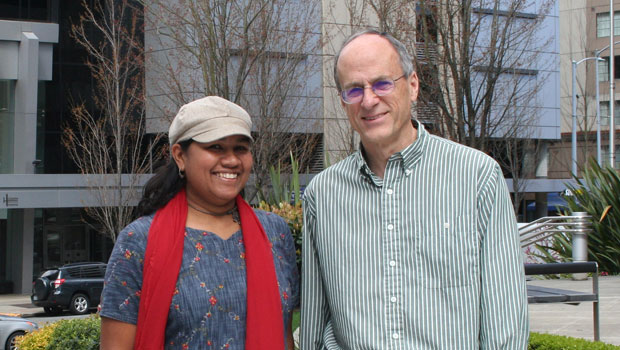Improving outcomes, preventing obesity in 60 US communities

A 12-article report features CCHE on decade of Kaiser Permanente Community Health Initiatives, write Drs. Cheadle and Kuo
by Allen Cheadle, PhD, a senior investigator at Kaiser Permanente Washington Health Research Institute (KPWHRI) and director of the Center for Community Health and Evaluation (CCHE) and Elena Kuo, PhD, MPH, senior research associate/program manager at KPWHRI’s CCHE
It’s no secret that Kaiser Permanente is dedicated to improving its members’ health. But the organization’s mission also commits it to improve the health of the communities in its eight regions. And before there even was a Kaiser Permanente Washington, CCHE started to work as an external partner on designing, implementing, and evaluating Kaiser Permanente’s Community Health Initiative.
Now we’re excited to see over a decade of this work come to fruition with the publication of a special 12-article supplement to the May edition of the American Journal of Preventive Medicine: Building Thriving Communities Through Comprehensive Community Health Initiatives: Evaluations from 10 Years of Kaiser Permanente’s Community Health Initiative to Promote Healthy Eating and Active Living.
How it started
Our work on planning for Kaiser Permanente’s Community Health Initiative started in 2003, when CCHE was still part of the Group Health Community Foundation. Later CCHE joined Group Health Research Institute — which became KPWHRI in 2017. Along with our KP colleagues Loel Solomon, PhD, MPP, and Pam Schwartz, MPH, we recognized that many complex and interrelated cultural, economic, social, and environmental influences drive the obesity epidemic. So instead of sticking with individual-level interventions and more traditional health promotion, the Initiative focused on new strategies that were less well-tested: system-level place-based interventions centered on changing policies and environments for food and physical activity.
Recognizing that obesity and its health consequences are especially common in low-income areas, the Initiative took a community-driven approach focused particularly on those communities. Started in Colorado and Northern and Southern California, it has helped to improve health policies, programs, and ultimately health outcomes in more than 60 communities in 6 regions across the country, affecting the lives of over 715,000 people.
What we learned
The supplement gives an overview of the Initiative and highlights findings and accomplishments that both improved community health and added to the evidence around community-based health promotion. These are some of the key lessons that emerged:
Dose matters.
Through this work, we developed a way to measure — and boost — the impact of community health strategies. “Population dose” — or simply “dose” — estimates the combined impact of multiple strategies on population-level health behaviors based on reach (number of people exposed to an intervention) and strength (relative change in behavior for each of those people). Thanks to sharing our dose toolkit, we’re starting to see these methods gain momentum and be used in broader initiatives beyond Kaiser Permanente.
Focus on youth in schools for population-level impact, particularly physical activity.
All the observed population health changes related to the presence of strong (high-dose) interventions took place in schools, not community settings. There are a number of good, underlying reasons for both targeting school-age children and using school-focused strategies. Children, especially in elementary school, are a captive population with more limited food choices while in school, with more opportunity for in-class physical education, and recess physical activity minutes. It is also easier to make changes in school building policies, practices, and the environment that can affect all or most children.
Be flexible and responsive to community priorities.
Several communities determined that issues such as unemployment and violence were significant barriers to advancing their healthy eating/active living strategies. Key to success in several communities was being flexible in letting them shift direction and work on these underlying issues, for instance through violence prevention, economic development, park safety, and blight removal.
Reflect to improve.
We intentionally fed evaluation findings and other information back to the implementers in various ways to help make program improvements. Learning sessions and retreats increasingly used interactive learning techniques. Particularly influential were strategic “refresh” meetings: cross-regional meetings to review progress and discuss barriers and opportunities. These led to large-scale refinements to the Initiative’s strategic approach and evaluation methodology that ultimately increased its impact.
Walk the talk.
We learned it’s important to bring about change within your own organization as much as possible. In addition to providing health benefits to staff and clients/customers, these changes build credibility and let sponsors speak more forcefully and convincingly to other organizations that are also being asked to make changes.
Going forward
The CCHE team continues to provide evaluation support to Kaiser Permanente’s initiatives to improve community health. CCHE’s evaluation work on the Community Health Initiative helped shape the direction of Kaiser Permanente’s Thriving Schools and Thriving Cities initiatives, which are furthering the community health policy and environmental change work with a focus on schools and cities.
Learn more about Kaiser Permanente Washington Health Research Institute. Sign up for our free monthly newsletter.


